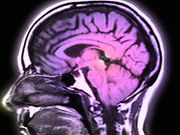Acute infarction on DWI seen in similar numbers of patients clinically diagnosed as TIA, TNA
FRIDAY, Dec. 11, 2015 (HealthDay News) — The presence of diffusion-weighted imaging (DWI) lesions is similar in patients clinically diagnosed with transient neurological attack (TNA) and transient ischemic attack (TIA), calling into question the accuracy of clinically diagnosing TIA, according to research published in the December issue of the Annals of Neurology.
Frank G. van Rooij, M.D., from the Radboud University Medical Center in Nijmegen, Netherlands, and colleagues examined the prevalence of DWI lesions in patients with a TNA not fulfilling the criteria of TIA, as clinically diagnosed by experienced stroke neurologists. Data were included for 143 patients aged ≥45 years who were referred to a specialized outpatient TIA clinic within seven days of an event of acute onset neurological symptoms.
The researchers found that 87 patients were classified as TIA and 56 as TNA. The overall diagnostic agreement was found to be low (κ = 0.36). Signs of acute infarction on DWI were seen in 31 and 23 percent of TIA and TNA patients, respectively (P = 0.41). There was no difference in terms of lesion presence in early (zero to three days after symptom onset) versus late (four to seven days) DWI scanning (P = 0.60); event duration was not associated with DWI positivity (P = 0.37). Overall, there were 72 DWI lesions in 40 patients; TNA patients more often had lesion multiplicity (P = 0.05).
“This questions the accuracy of clinically diagnosing TIA and suggests added value for early magnetic resonance imaging after an episode of acute onset atypical or nonfocal neurological symptoms,” the authors write.
Copyright © 2015 HealthDay. All rights reserved.








